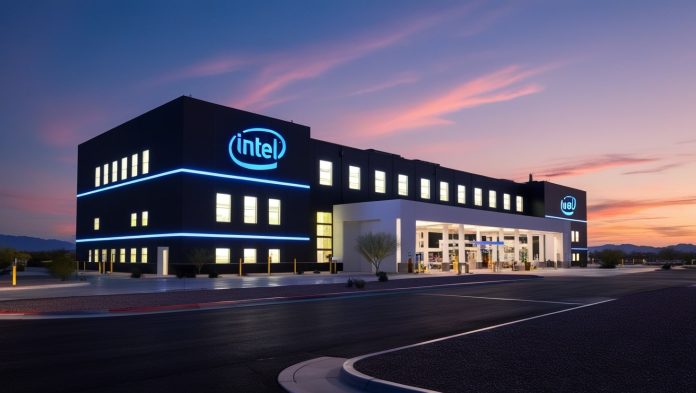The shares of Intel Corporation traded higher on August 19, 2025, after the U.S. government announced a 10 per cent stake in the company with CHIPS Act grants, which could make it the largest stockholder. The share soared 6.8 per cent to $34.12, a gain of about $14 billion to its market value, due to the news, along with a strong demand for the artificial intelligence chips produced by Intel.
This rally comes as Intel tries to operate in a competitive semiconductor environment filled with concerns over tariffs and their intensity. As such, it is seen as a major stakeholder in the U.S. ambitions to establish semiconductor manufacturing supremacy.
Government Investment Fuels Optimism
The government stake established in the reported CHIPS and Science Act, designed to increase domestic semiconductor manufacturing, highlights the priority of Intel to national security as well as the economic objectives. According to Bloomberg, the Biden administration is considering grants that would award Intel with a considerable amount of money to buy more factories in the U.S., especially in Arizona and Ohio.
This action is consistent with the investment; Intel plans to invest 100 billion dollars to support its foundry business to compete with the Taiwanese TSMC. In a statement, CEO Pat Gelsinger added that such support would help Intel more rapidly become a leading AI and advanced chip manufacturer, less vulnerable to foreign supply chains.
Investors wasted no time, as share volume skyrocketed to 78 million shares, or almost three times the average daily trading. The plans of government support would offset the risks posed by the proposed 300 per cent tariff imposed by President Trump on semiconductors, which have dragged down the share prices of other companies in the chip industry, but not Intel, as it focuses on the domestic market. Analysts interpret this as a vote of confidence in Intel’s long-term strategy, including a shift toward AI-based solutions and foundry services.
Growth and AI Performance
Such hopes were added to harm as Intel announced its latest quarterly profits last week. The company posted adjusted earnings per share of 0.12, exceeding the 0.10 forecast, and reported revenues of 13.1 billion. AI chip division. This segment, which incorporates Gaudi 3 accelerators, experienced a 45 per cent revenue growth rate compared to the previous year due to demand from cloud providers, such as AWS and Microsoft. Intel also made progress in its foundry business, which led to a $2 billion increase in new contracts, a sign that it is gaining some confidence in its manufacturing.
In spite of such achievements, problems exist. The gross margin of Intel dropped to 38 per cent compared to 40 per cent last year due to increased expenses of the foundry ramp-up. The firm has also reported that it will make a 15 per cent reduction in its workforce to eliminate unnecessary costs, which is a source of concern in terms of execution risks.
But the emphasis by Gelsinger on operational efficiency and AI development has comforted investors, and Gelsinger shares are currently listed at a forward price-to-earnings ratio of 18, in contrast to Nvidia, where it is 45.
Outlook by Analyst and Market Impact
Wall Street analysts hiked the outlook, with JPMorgan lifting its price target to $38 per share (up from $35) on the pace of AI and government support. Morgan Stanley retained an overweight rating but cited that Intel had a manufacturing advantage back at home, which could protect the company against the fluctuations of tariffs. The upsurge in the stock spurred others such as AMD (up by 2.3 per cent) and Qualcomm (up by 1.9 per cent), and increased the PHLX Semiconductor index by 1.5 per cent.
Looking Ahead
Intel repeated that it still believes it would reach full-year revenue of between 54 and 56 billion dollars, with AI chips supposed to play a key role. Some of the challenges affecting the company include competition with Nvidia and TSMC, and possible trade interruption in case tariffs increase. However, its geopolitical suitability to the U.S. policy interests and development of AI sets it in a good standing.
Intel shares are also squarely in focus as investors await more clarification on an emerging deal under the CHIPS Act that will purportedly help bring the two companies together. Housing starts data for the current date, indicating a 3 per cent increase, is another indicator of an optimistic outlook for demand in technology infrastructure, thereby bolstering Intel’s expectations.



 Bitcoin
Bitcoin  Ethereum
Ethereum  Tether
Tether  XRP
XRP  USDC
USDC  Solana
Solana  TRON
TRON  Lido Staked Ether
Lido Staked Ether  Cardano
Cardano  Avalanche
Avalanche  Toncoin
Toncoin